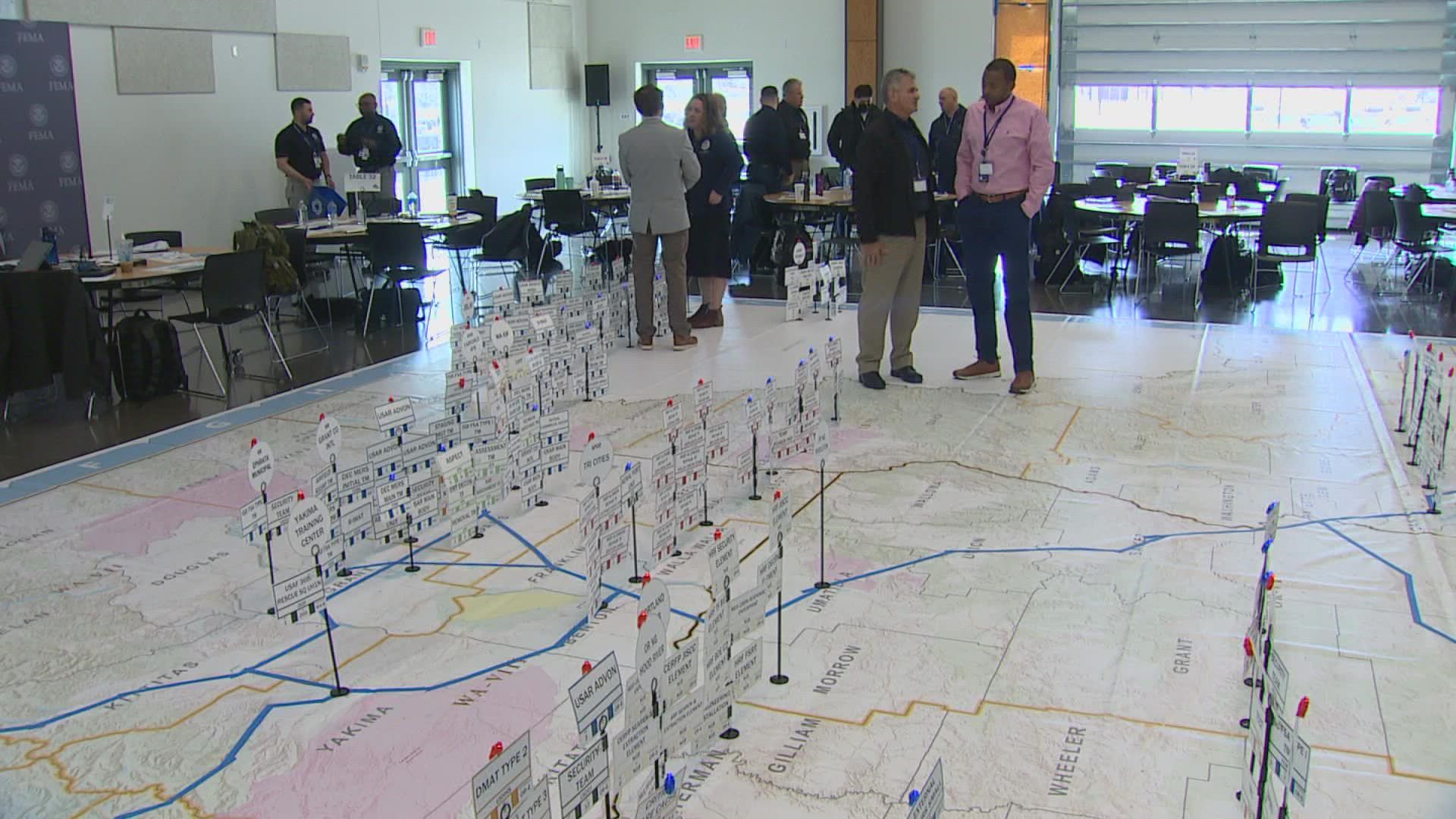CAMP MURRAY, Wash. — First responders preparing for a massive earthquake planned on repeating the 2016 Cascadia Rising exercise, complete with troop and machinery movements.
However, COVID-19 outbreaks in the fall caused the Federal Emergency Management Agency to downscale those plans for 2022.
So instead of helicopters and dispatchers, a group of 200 emergency officials, with another 500 online, participated in an exercise at Camp Murray with an oversized map of the Pacific Northwest.
Think of it as a big board game. The goal: try and get resources to western Washington following a 9.0 earthquake and tsunami.
”Those blue lines are our roads that we think will survive based on science, based on criteria,” said FEMA Region 10 Administrator Willie Nunn. "The orange lines may or may not be passable."
He said the map exercise still enables first responders to interact and learn what to expect in a natural disaster.
”This allows us to look at what's real, what we can do, what more resources we're going to need, and how do we come together as a team,” said Nunn.
The 2016 exercise, a week-long event involving thousands across the state, found more preparation was needed and communication lines needed to be improved between agencies, based on an analysis of the event.
”We just saw how fragile our infrastructure systems were. And it really became crystal clear that much of the Cascadia response is going to be a huge logistics challenge,” said Washington’s Emergency Management Director Robert Ezelle.
Ezelle said working out some of those logistics can be done with the map exercise, a three-day event.

